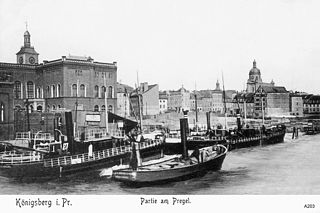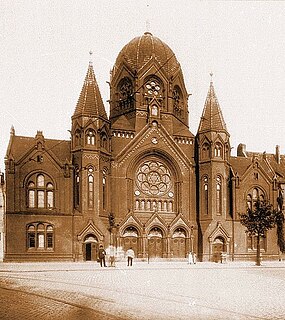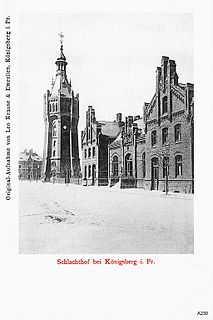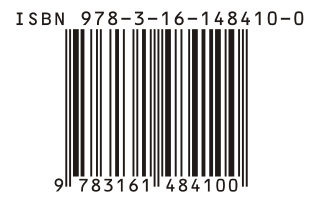Schönbusch was a suburban estate (Gutsbezirk) of and then a quarter of Königsberg, Germany, located southwest of the city center. Its territory is now part of Dimitrovo within the Moskovsky District in Kaliningrad, Russia.
A quarter is a section of an urban settlement.
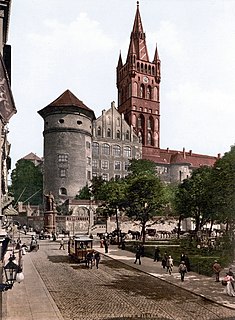
Königsberg is the name for a former German city that is now Kaliningrad, Russia. Originally a Sambian or Old Prussian city, it later belonged to the State of the Teutonic Order, the Duchy of Prussia, the Kingdom of Prussia, the German Empire, the Weimar Republic and Nazi Germany until 1945. After being largely destroyed in World War II by Allied bombing and Soviet forces and annexed by the Soviet Union thereafter, the city was renamed Kaliningrad. Few traces of the former Königsberg remain today.
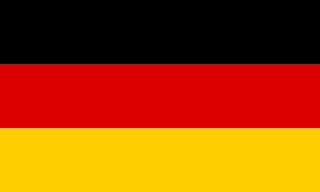
Germany, officially the Federal Republic of Germany, is a country in Central and Western Europe, lying between the Baltic and North Seas to the north, and the Alps to the south. It borders Denmark to the north, Poland and the Czech Republic to the east, Austria and Switzerland to the south, France to the southwest, and Luxembourg, Belgium and the Netherlands to the west.
Schönbusch developed from an inn known first as Niederkrug and then as Duboisruh, after its owner, Dubois. King William I and Queen Augusta visited there on 14 October 1861 before his coronation in Königsberg. [1] In 1865 it was known as Schönbusch and was part of the rural district of Königsberg (Landkreis Königsberg i. Pr.). Schönbusch was added to neighboring Ponarth on 14 October 1893; [2] Ponarth was then merged into the city of Königsberg in 1905.

William I, or in German Wilhelm I., of the House of Hohenzollern, was King of Prussia from 2 January 1861 and the first German Emperor from 18 January 1871 to his death, the first head of state of a united Germany. Under the leadership of William and his Minister President Otto von Bismarck, Prussia achieved the unification of Germany and the establishment of the German Empire. Despite his long support of Bismarck as Minister President, William held strong reservations about some of Bismarck's more reactionary policies, including his anti-Catholicism and tough handling of subordinates. In contrast to the domineering Bismarck, William was described as polite, gentlemanly and, while staunchly conservative, he was more open to certain classical liberal ideas than his grandson Wilhelm II.

Princess Augusta of Saxe-Weimar-Eisenach was the Queen of Prussia and the first German Empress as the consort of William I, German Emperor.

Dimitrovo is part of the Moskovsky District of Kaliningrad, Russia. Until 1947, it was known by its German language name Ponarth as first a suburb of and then a quarter of Königsberg, Germany, located southwest of the city center.
Schönbusch was most well known for its brewery, Aktien-Brauerei Schönbusch, founded in 1871. It acquired Brauerei Wickbold AG in 1923. The Amber Room was once believed to have been within the ruins of the Schönbusch brewery.

The Amber Room is a reconstructed chamber decorated in amber panels backed with gold leaf and mirrors, located in the Catherine Palace of Tsarskoye Selo near Saint Petersburg. Constructed in the 18th century in Prussia, the original Amber Room was dismantled and eventually disappeared during World War II. Before its loss, it was considered an "Eighth Wonder of the World". A reconstruction was installed in the Catherine Palace between 1979 and 2003.
